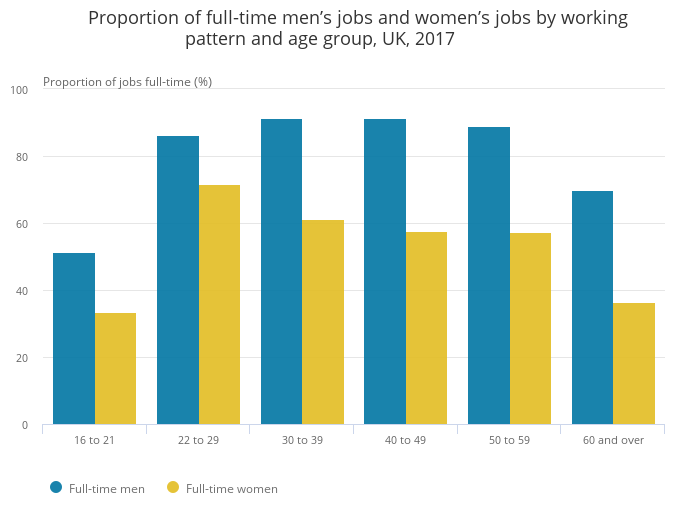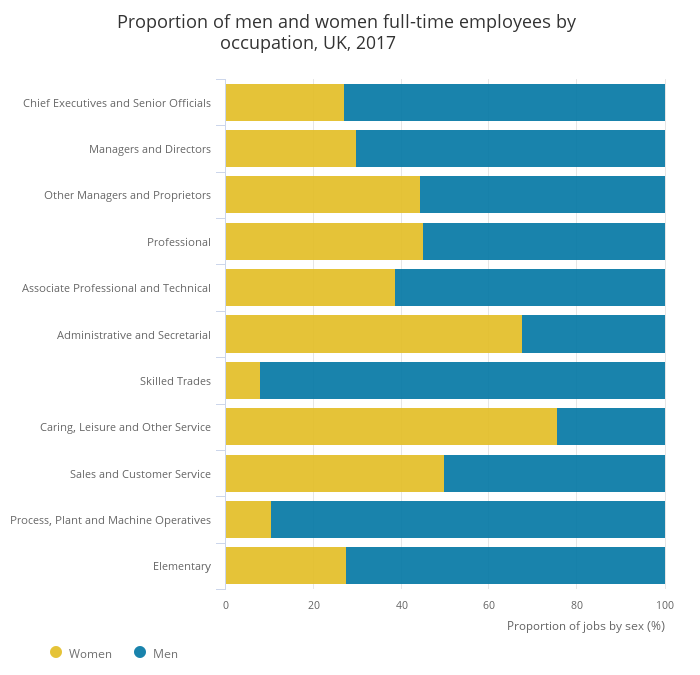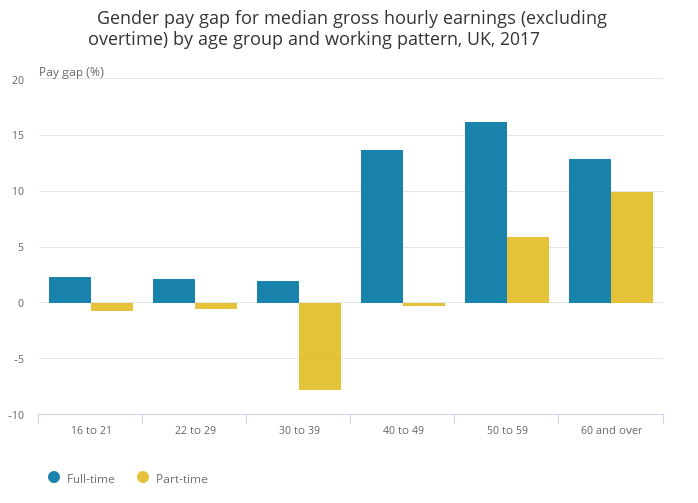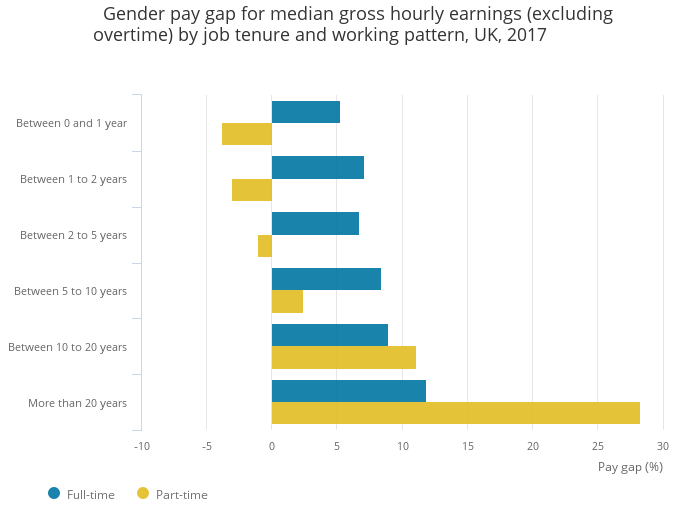It’s International Women’s Day, so we thought we would take a look at one of the most researched and discussed topics recently – the gender pay gap – and the data we hold, to understand the issue.
The Annual Survey of Hours and Earnings (ASHE) is one of the largest surveys of the earnings of individuals in the UK. Data on the wages, paid hours of work, and pension arrangements of nearly one per cent of the working population are collected. (These sensitive data are accessed through our Secure Lab.)
ASHE provides the opportunity to research various topics including the gender pay gap. A recent comprehensive statistical release published by the Office for National Statistics (ONS) offers an insight into the topic, and discusses the main aspects influencing the gender pay gap. From the statistical release, it is well understood that the gender pay gap for full-time workers favours men in all occupations. However, it is important to understand there are several factors that affect the gender pay gap:
- Working pattern: The median hourly pay was higher for both men and women working full time compared to those working part time. At all ages, men are more likely to work full time than women.

- Occupation: Various research papers have argued that another highly influential factor on the gender pay gap, besides working pattern, is occupation; the same results are presented in Understanding the gender pay gap in the UK, 2018. Out of 11 occupation groups, for six of them more than 60% of employees are men, while there are only two groups where more than 60% of employees are women. Full-time male employees in the highest paid group earn 5.3 times more than full-time male employees in the lowest paid group; for women, those working full-time in the highest paid group earn only 4.5 times more than the full-time women working in the lowest paid group. In 2017, full-time working men in the highest paid group earned a median hourly pay of £48.53 while women in the same conditions earned £36.54.

- Age: one of the main aspects influencing someone’s pay is age. In 2017, for full-time workers the gender pay gap is smaller for the younger age groups (16 to 39), no more than 2.4%, but significantly higher for the older age groups (40 to over 60), peaking at 16.2%. For part time-workers, the gender pay gap actually favours women for ages 16 to 49, but men for ages 50 to 60 and over, and is highest for those 60 and over (10%).

- Job tenure: In 2017, the median hourly rate for full-time male employees who have been in the same job for more than 20 years was £18.35, but £16.60 for women. For both genders, the pay was considerably higher the more time spent in the same job (59.6% for men and 48.4% for women). However, when looking at part-time work, the gender pay gap is negative for up to five years in the same job and positive and extremely high for those in the same job for more than 20 years.

Having said this, it is important to highlight that the gender pay gap has decreased constantly from 2011 (10.5%) to 2017 (9.1%) and that in 2017 women’s median hourly pay has grown by 12% from £11.75 to £13.16. Moreover, according to the most recent Quarterly Labour Force Survey data (October-December 2017) the employment rate for women has reached a new record, 70.8%, the highest employment rate since records began in 1971.
In order to increase the awareness and improve pay equality, the UK government has introduced a compulsory reporting of the gender pay gap for organisations with 250 or more employees by April 2018 #pressforprogress.
